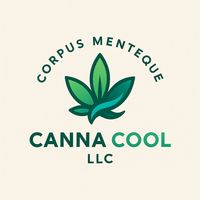How to Read a CBD COA (Lab Report): A Simple Guide for Confident Shopping
If you’ve ever stared at a CBD Certificate of Analysis (COA) and felt lost in numbers and acronyms, you’re not alone. A COA is simply a third-party lab report that verifies what’s in your product—and what isn’t. At CannaCool, we make COAs easy to find and easy to understand because trust isn’t optional. This guide shows you exactly how to read a CBD lab report so you can shop with confidence and build a routine that supports your wellness goals.
Step 1: Confirm the basics (top of the report)
Before you look at any numbers, verify identity and freshness.
- Product & Batch/LOT: The name on the COA should match your bottle or jar, and the batch/LOT number must be the same.
- Test Date: Newer is better. Look for test dates within the last 9–12 months for finished goods.
- Lab Info: The COA should come from an independent, accredited lab (you’ll see the lab’s name, address, and contact info).
- QR Code: Many labels link directly to the COA; scan it to make sure you’re viewing the exact batch you’re holding.
CannaCool tip: We list mg of CBD per serving and per container on labels and match each product to its batch COA—no guesswork.
Step 2: Cannabinoid profile (potency)
This section tells you what active compounds are present and how much.
- CBD (cannabidiol): Check that the amount matches or exceeds the label claim within normal variance. For example, a “900 mg / 30 mL” oil should show ~30 mg CBD per mL (per 1 full dropper).
- THC: For hemp products, Δ9-THC must be within legal limits. Full-spectrum formulas will show trace THC; broad-spectrum and isolate should be non-detectable.
- Minor cannabinoids: You may see CBG, CBC, CBN, etc. They contribute to the product’s overall profile and potential “entourage” effect.
- Units explained:
- mg/g or mg/mL = how many milligrams per gram or milliliter (great for oils and topicals).
- % (by weight) = useful for gummies or solids.
- ND = Non-Detect (below the lab’s detection limit).
How to sanity-check a label claim:
If your 30 mL tincture shows 30 mg/mL CBD, multiply 30 mg × 30 mL = 900 mg total CBD—a perfect match for a 900 mg label.
Step 3: Terpene profile (optional but nice)
Some COAs include terpenes (aromatic plant compounds like limonene, linalool, beta-caryophyllene). A diverse terpene profile is common in full-spectrum and broad-spectrum products, and contributes to flavor and overall experience. If you’re choosing between similar products, terpene data can be a tiebreaker.
Step 4: Purity & safety screens (non-negotiable)
High-quality CBD means more than potency. Look for clean results across these categories:
- Heavy metals: Lead, arsenic, cadmium, mercury should be Pass / ND.
- Pesticides: Should be Pass / ND against state or federal action limits.
- Residual solvents: Especially relevant for extracts; should be Pass / ND.
- Microbials & Mycotoxins: Tests for mold, yeast, E. coli, Salmonella should be Pass / ND.
- Foreign materials: For gummies and topicals, some labs include specs for physical contaminants.
If any line item approaches a limit, the COA will note it; top-tier brands reject questionable batches.
Step 5: Match format to expectations
Different product types read a bit differently:
- Oils/Tinctures: Look for mg/mL. Confirm CBD per dropper and spectrum type (full, broad, isolate).
- Gummies/Capsules: Look for mg per unit. Potency should align with the serving size listed on your label.
- Topicals/Skincare: Expect mg per container and often mg/g. Many topicals also include microbial testing.
- Pets: Same logic as human products—potency + purity must be clear.
Step 6: Understand spectrum language
- Full-spectrum CBD: CBD + minor cannabinoids + terpenes with trace, legal THC.
- Broad-spectrum CBD: Similar to full-spectrum but non-detectable THC.
- CBD Isolate: CBD only—no other cannabinoids or terpenes.
Your COA should reflect the spectrum on the label. For example, a broad-spectrum product should show ND for Δ9-THC.
Step 7: Red flags to avoid
- No batch number or mismatched LOT between COA and product.
- Missing safety panels (metals, pesticides, microbials, solvents).
- Vague “hemp oil” with no CBD mg listed on the COA or label.
- Outdated test or “generic” COA not tied to your batch.
If you spot a red flag, choose a brand that treats testing as a promise, not a marketing line.
How CannaCool makes COAs easy
- Clear labels with CBD mg per serving and per container
- QR codes linking to batch-specific COAs
- Third-party testing for potency and purity on every batch
- Formats for every routine—oils, gummies, capsules, topicals, skincare
- 60-day money-back guarantee—because wellness should feel transparent and safe
Quick FAQ
Is “hemp seed oil” the same as CBD?
No. Hemp seed oil is nutritious but naturally contains little to no CBD. Your COA should list cannabinoids for CBD products.
Why are my results slightly over the label claim?
Small variances are normal. Quality brands aim to meet or slightly exceed the label so you receive the potency you paid for.
Do topicals need COAs?
Yes—especially for microbial and heavy-metal safety, plus total CBD per container.
The bottom line
A CBD COA is your product’s truth-sheet. Confirm the batch and date, verify CBD potency, check THC and minor cannabinoids, then scan safety panels for clean Pass/ND results. When everything lines up, you’re holding a product you can trust.
Compliance & Safety Notice
This content is for educational purposes only and not a substitute for medical advice. Consult a qualified professional before using CBD, especially if you’re pregnant, nursing, have a medical condition, or take medications.
